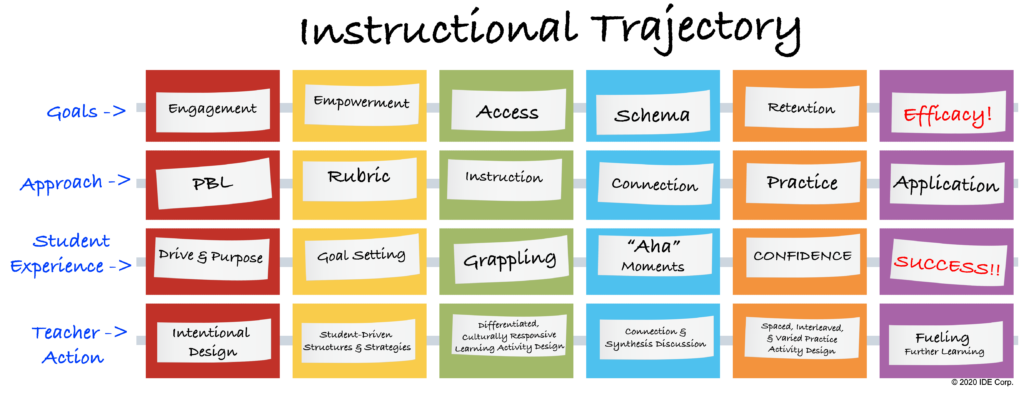The shift to hybrid learning environments brings with it some different responsibilities for teachers. Whereas when all the students are in the room, you can “swoop in” to clarify or redirect, you can “go with the flow” and adjust your plans on the spot, and you don’t have to anticipate as much as react . . . the hybrid world requires a deliberate and purposeful approach to teaching. But this is not new to mankind.
Parents who are home with their children handle a lot of daily events. They might prepare the meals; they are available to address anyone who comes to the door; and so forth. Consider parents who are going out for the night, leaving an older sibling in charge. What do they do?
They deliberately guide their children. For example, “Don’t answer the door. If you’re on the phone and anyone asks, never say I’m not home; say I’m in the shower. Do your homework. Be sure your sister goes to sleep by 9:00. Don’t turn on the stove; just microwave the food I left for you. And remember to put the milk back in the refrigerator.” Parents are deliberate about each statement and they are purposeful in that they are trying to keep their kids safe and their home intact.
Now that classrooms are “hybrid,” it’s the same idea. As an educator, if students are working from home, not right within your reach, you have to be much more deliberate and purposeful than ever before. This applies to all aspects of education, but for this blog post, let’s just look at the instructional trajectory.
I call it an instructional trajectory because, while learning is always the goal, it is through the teacher’s deliberate and purposeful instructional decisions that students maintain momentum toward and achieve this goal.

To read this, look across the top at the goals. First, we must engage students if we are going to teach them. Then, especially in a hybrid learning environment, we must empower them to take responsibility for their own learning, whether they are working at home or in school. Next, we must give them access to a variety of ways in which to learn, including, perhaps, a video session with the teacher. However, instructional activities alone are not enough. We need to make sure students make connections to other learning and have those “aha” moments that demonstrate they’re on the way to deep learning. Through practice, students will then build confidence and solidify that learning for the long term. Finally, when students can apply that learning to tackle a problem or challenge, they feel success, which builds on their sense of efficacy.
Under each one of those goals, you can explore the approach, student experience, and teacher actions that bring it to fruition.
More Resources:
Virtual Learning Community (online course): “An Introduction to Designing Hybrid Learning Environments”
